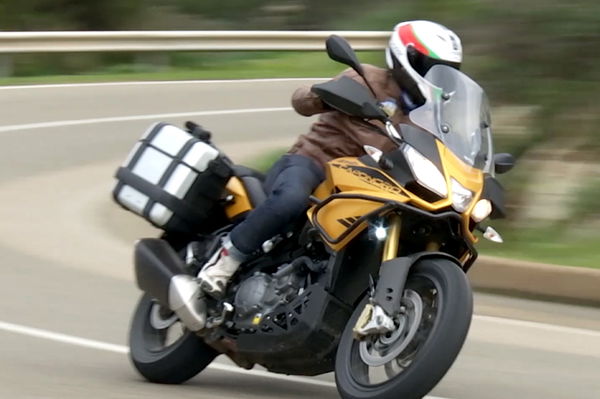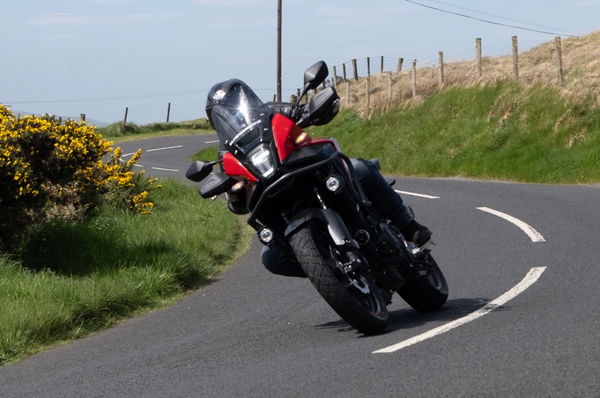2015 R1 and R1M review
Visordown didn’t ride the 2015 R1 until the end of the week-long press launch - which meant we got one of the first goes in the dry. Read our verdict on Yamaha's new 200hp weapon.

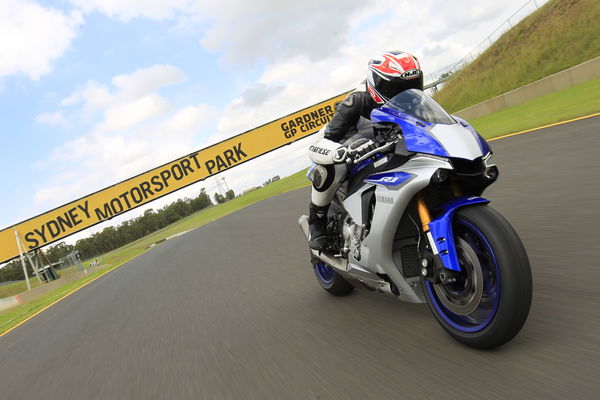
FROM the moment Yamaha unveiled the all-new 200hp 2015 R1 last year, it was clear it was going to be a serious weapon.
It was, the firm said, developed not from the outgoing 2012 R1, as with previous versions, but from the YZR-M1 raced by Messrs Rossi and Lorenzo in MotoGP.
Even so, I didn’t expect it to feel quite so compact, controllable and blindingly quick as the blue-and-silver missile that howled to almost 180mph on the Sydney Motorsport Park’s pit straight, then slowed with brief ferocity before flicking into the fast, fourth-gear left-hander.
At the end of the 2005 MotoGP season, I rode Rossi’s championship-winning bike at Valencia, which by coincidence has a very similar first couple of bends. I was surprised by how much this Yamaha R1 reminded me of it.
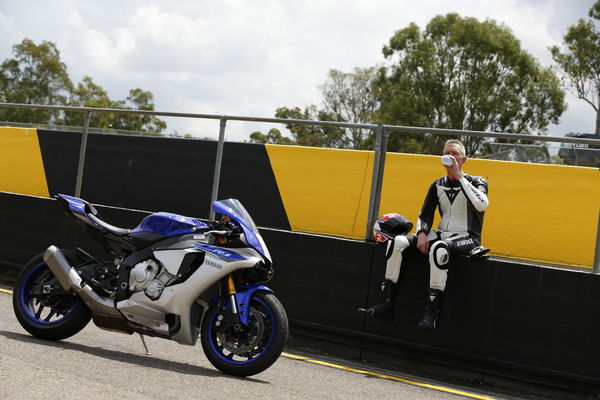
Even the M1 of nine years ago remains in a distinctly different class to this production R1. Rossi’s race bike produced 243hp and weighed 148kg dry, which makes this latest 2015 R1’s claimed 200hp and 186kg without fuel (so about 170kg dry) seem almost ordinary. But the R1 does have a fantastically sharp, light, racer-like feel as well as lashings of power.
This new street bike’s figures put it right up there with BMW’s S1000RR, and there’s so much more to this R1 than vital statistics. It’s not just more powerful and lighter than the previous model but much more compact and refined, especially with an M1-based electronics package that is arguably the most advanced and sophisticated of the current superbike bunch.
Yamaha left no performance-enhancing stone unturned in developing this R1, starting with a 16-valve engine that keeps the old model’s 998cc capacity but has more over-square dimensions (79 x 50.9mm from 78 x 52.2mm), a higher compression ratio, new rocker-arm valve operation, narrower valve angle and the first fracture-split (made in one piece, then cracked in half) titanium con-rods on a production bike.
The chassis is also completely new, based on an aluminium Deltabox frame that follows the YZR-M1 by having a central air intake pipe running through the headstock to an airbox that is 24% larger than its predecessor. Naturally, the injection system is also new, with a choice of four throttle response maps. Steering geometry is unchanged but the swing-arm and wheelbase are both shorter.
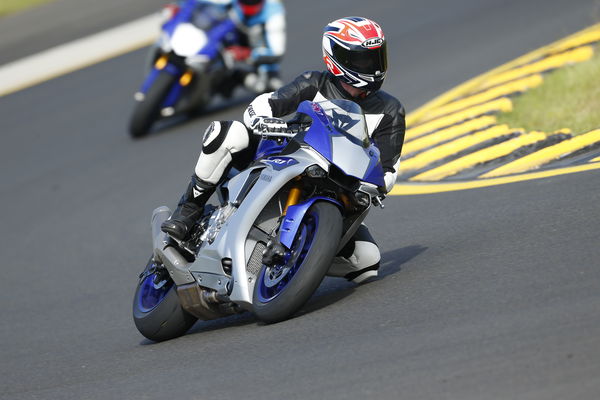
This bike’s claimed weight with a full tank is 5kg lighter than the S1000RR’s, whose power output is virtually identical, at 198hp. That weight saving didn’t come by accident: the 2015 R1’s fuel tank is made from aluminium instead of plastic; the rear sub-frame, engine covers and even the wheels are magnesium; and the four-into-one exhaust is mostly titanium.
But it’s the electronics – roughly 90% of the M1’s system, according to project leader Hideki Fujiwara – that make the biggest difference over the old R1. The heart of the operation is a compact device called an IMU, or Inertial Measurement Unit. This basically consists of three gyros that measure pitch, roll and yaw, plus three acceleration sensors that measure forward/back, sideways and vertical movement. Between them, they can detect exactly what the bike is doing, 125 times per second.
This in turn has allowed Yamaha to introduce a long list of features and acronyms. Alongside the updated TCS traction control system (which as before works by sensing the difference in front and rear wheel speed) there’s the new SCS slide control system, which can detect when the rear wheel is stepping out. There’s an anti-wheelie function (called LIFt), a launch control system for race starts, and a unified brake system (UBS).
It’s complex stuff, but Yamaha has done a good job of making it simple to use. The various levels of all the systems, including the four power modes, can be selected via a button on the left bar. On the right there’s another button for what’s called Yamaha Ride Control System. This allows the rider to select from four of his own groups of pre-settings. So, for example, you can have one group of settings for fast road or track, another for town and one for rain, each one programmable with your own desired levels in each electronic function.

All this info is shown in a compact and attractive thin film display that gives a choice of road or race views. That sits beneath a screen shaped for aerodynamics but slightly taller than some race-replica ones. ‘Compact’ is a word that will be used a lot to describe this R1. Its seat is slightly taller, giving a fair bit of leg room. I’m very tall and didn’t feel cramped. And yet even in the pit lane it felt light, small and racer-like.
The motor’s a gem: not just plenty powerful up top but smooth, flexible and characterful for a straight four, as it bellows that unique crossplane sound from the four-into-one. Despite its even more over-square dimensions, it seemed respectably strong low down, happily pulling from below 4,000rpm in fourth and fifth, when I rode the first session’s cool-down lap several gears too high. The top-end charge didn’t seem quite as vicious as the S1000RR’s or Ducati1299 Panigale’s, but perhaps that was due to the wheelie control doing its stuff to stop the front-end lifting.
The week-long international press launch was hit by rain, but I was among the last group of journalists to ride the bike, and benefited from much improved weather. On a hot Sydney day, throttle response proved superb; so much so that there was no reason to use anything other than the most aggressive power mode. The quick-shifter worked flawlessly, too, although the R1 doesn’t have the auto-blipper that allows clutch-less downshifts on the BMW and Ducati.
Handling was just as you’d expect from a light, short, stiff, race-bred bike. The 43mm KYB fork-tops protrude through a neatly finished top yoke, complete with adjusters for pre-load, compression and rebound damping. The bike had been well set up by Yamaha’s test riders and needed only a fraction more fork pre-load to corner with sublime control on a circuit ranging from a fast, bumpy left-hander, where stability is the prime requirement, to low-speed bends that put a premium on flickability.
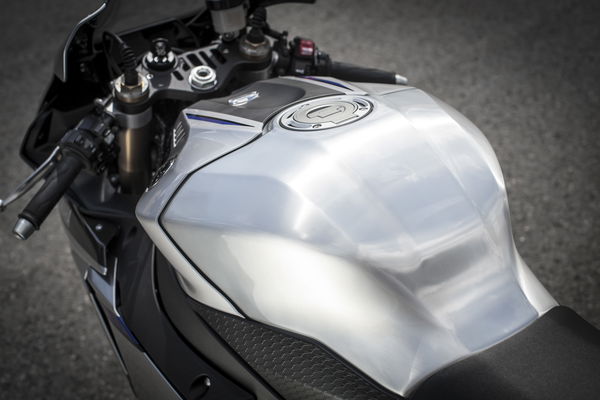
The Yamaha passed both tests and all those in between, its super-sophisticated electronics helping make it as safe as it was fast. Over a couple of crests it snapped its bars briefly but always settled down with minimal fuss, the anti-wheelie software helping it charge forward and working in a very smooth, subtle way.
The Bridgestone RS10R tyres – a softer, track day oriented version of the RS10 that the bike is delivered with – gave heaps of grip, and meant you really had to dial in plenty of throttle to get the rear moving. Frankly I couldn’t tell the difference between the traction control and slide control, but between them they make a formidable partnership. You really can just wind open the throttle at full lean on the apex of a bend, and let the IMU sort out those 200 horses.
Stopping power was impressive, too, thanks to new monobloc calipers biting 320mm discs. Yamaha’s Unified Brake System adds a bit of rear anchor when the front is applied, and uses the IMU to adapt to lean. It’s not a full cornering ABS system like the 1299 Panigale’s but still slowed the Yam mighty swiftly.
It adds up to a stunningly quick, capable bike that puts Yamaha right back in the superbike race. Inevitably it will be firm and uncompromising as a street bike, but that flexible engine and light, agile chassis will be assets for fast road riding too.
The R1 is right up in the sharp end of the class, and at £14,999 it’s equally competitive in the showroom. In such a closely-fought class, I’m not sure yet which machine my money is on as the outright best. But if you want the full MotoGP experience from a production bike, the R1 is about as close as it gets.

2015 R1M
After three sessions on the standard R1 we got two on its upmarket, limited-edition derivative, the R1M. It combines the same power plant with a chassis featuring carbon-fibre bodywork and Öhlins semi-active suspension, controlled by the same IMU and with slightly stiffer springs. This is very similar to the system used by the 1299 Panigale, and every bit as impressive, as well as easier to fine-tune via Yamaha’s simple but effective push-button display.
As with other semi-active systems the biggest benefit is that it allows the suspension to be firm when needed (typically the front under braking, the rear under acceleration) and compliant when not. This was well illustrated in the long, super-fast and pretty bumpy first turn, where you need to brake from high speed. The R1M was firm on the brakes yet floated over the bumps notably better than the standard bike. And when I wanted a bit of extra compression damping it took only a few seconds’ of button pressing to dial it in.
The R1M also comes with a polished aluminium tank and swing-arm, a slightly fatter, 200-section rear tyre (also an RS10, although we were treated to super-sticky Bridgestone slicks on the launch), and a GPS-enabled data-logger. But before you get your hopes up, only 75 are coming to the UK this year - and they’re all accounted for, despite costing £18,499.
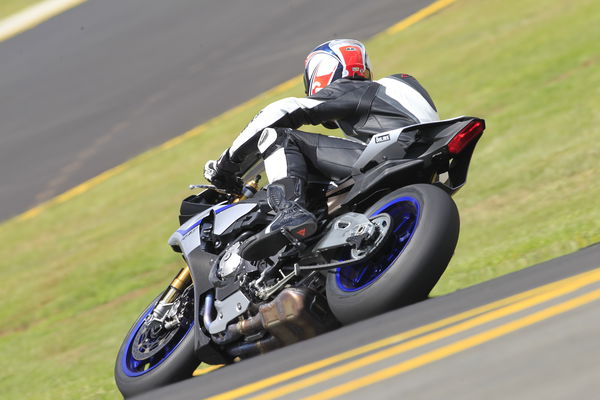
2015 R1 specs
- Model tested: 2015 Yamaha YZF-R1 and YZF-R1M
- Engine: 998cc in-line four
- Price: £14,999 (R1M £18,499)
- Power: 200hp
- Torque: 83lbft
- Wet weight: 199kg (full tank)
- Tank capacity: 17 litres
- Seat height: 855mm
- Available: March (R1M sold out)
